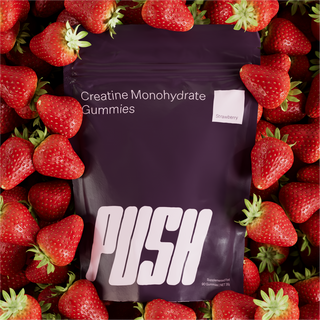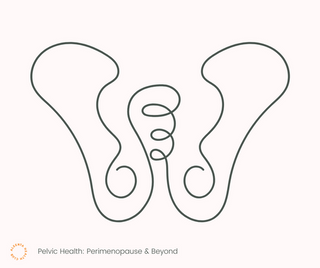By now we’ve all heard about it; so-called ‘natural’ deodorant. But is it really worth the hype? And most importantly, does it really work?
In February of 2021, I made the switch from regular, aluminium-based deodorant to all-natural. I even tried out a few different types. And before I knew it, what started out as a short, 2 to 3-month experiment turned into over a year of testing, and if I’m honest… I’m never going back.
You might be wondering: what is natural deodorant? Is regular deodorant bad? Should I be making the switch too? Not to worry, for by the end of this blog, I’ll have all your questions answered. Let’s start with the basics:
Deodorant VS Antiperspirant
One thing to understand here is that we are talking about deodorant. Deodorant stops you from producing odour when you sweat, but it doesn’t stop you from sweating. If you are someone who sweats a lot and wants to control that, switching to deodorant – natural or otherwise, may not be what you’re looking for. However, if tackling that pesky B.O. is your goal, then you’re in the right place!
Regular VS Natural Deodorant
So, what’s the difference? You might have heard a lot of talk about aluminium in traditional deodorants and antiperspirants. Aluminium is used in these products because it works as a sweat-blocking agent; it forms a plug at the surface of the sweat duct, preventing sweat production and release. Now this is all true; natural deodorant does not use aluminium. However, in recent years there has been a rise in the idea that aluminium in these products is carcinogenic, particularly for breast cancer given the armpit’s proximity to breast tissue. This is a MYTH and has been tirelessly debunked by scientists and doctors alike. According to dermatologist Susan Massick, MD:
“an exhaustive 2014 review published in ‘Critical Reviews in Toxicology’ showed no correlation between aluminium-containing antiperspirants and increased cancer risk, specifically breast cancer. While one in eight women will develop breast cancer, the use of an antiperspirant is not the instigating risk factor.”
So now you’re thinking, ‘then what are the benefits of natural deodorant?’
The answer is simple: fragrance. Have you ever perused the ingredients label of your favourite shampoo, body wash or other hygiene product and noticed the common ingredient, ‘fragrance’? This is no coincidence. Many supermarket brand hygiene products, including traditional deodorants, contain this vague ingredient listing. What is this mysterious ‘fragrance’? The shocking truth is that companies can list many synthetic chemicals as ‘fragrance’ and never specify the actual ingredient for its consumers. Unlike aluminium, several of these fragrances have been linked to health risks such as hormone disruption and according to the Environmental Working Group, artificial musks “accumulate in our bodies and can be found in breast milk” and some are even linked to cancer. The same ‘fragrances’ listed on your deodorant’s ingredient list can also be found in cleaning products, scented candles, and air fresheners.
Okay, I want to switch! What’s next?
The Detox.
You may have heard this word thrown around when it comes to switching to natural deodorant. Where aluminium being bad for you was a lie, this one is unfortunately true, and probably the most annoying part of making the switch. Our bodies are used to certain chemicals and formulas in the traditional deodorants and/or antiperspirants we have been using, so to use natural deodorant effectively, we first need to allow our bodies to ‘detox,’ and stop relying on these ingredients. There are several ways to detox, however, I opted to go as natural as possible and let my body do the work itself. That’s right: I stopped using deodorant for a week. Other methods include using clay masks or apple cider vinegar, but each of these comes with their own irritations that, if you have sensitive skin like me, make the process harder than it has to be.
I thankfully was in quarantine after travelling during my detox, so I wasn’t really going anywhere that people would have to be subjected to my body odour. My advice for detoxing is trying to pick a time period where you may be exercising less, or perhaps opting for online classes that week if you are particularly conscious about your odour. You may also find showering more often during this time useful. You can try using your natural deodorant straight away too, just know it likely won’t work for a week or two until your body is ready.
Types of Natural Deodorant
Your final step is to choose a natural deodorant. There are several methods and brands that offer all kinds of natural deodorants: probiotic, paste, crystal, scented, unscented and more!
Now I am someone who is very active. I dance 8-12 hours a week, am a barre, Pilates and HIIT instructor/fanatic, and most importantly, live in New York City… so I walk EVERYWHERE! It was important to me that my deodorant could keep me smelling fresh without having to re-apply all day long. Here is my experience with the two deodorants I tried:
Paste Deodorant (scented)
I first opted for a paste deodorant with a grapefruit scent from the brand MeowMeow Tweet. Like I’m sure many of you are, I was anxious to switch to a deodorant without a scent at first. I used this deodorant for about 4 months and while it did work, there were some aspects I did not enjoy.
But let’s start with the positives:
- For a naturally scented deodorant, it is probably the best and strongest scented deodorant I’ve ever used! I smelt like a fresh grapefruit every day.
- On low-activity days, I didn’t have to reapply at all.
- One small jar lasted 4 months! That’s double the time in which my large aerosol antiperspirants would last.
Cons:
- I have reasonably sensitive skin. After a month or so I started noticing the paste deodorant was severely drying out the skin of my armpits, causing it to become red and itchy. Eventually through trial and error, I found that exfoliating my armpits in the shower, and then moisturising them before putting the deodorant on fixed this issue. However, that’s a lot of steps to go through just to smell nice!
- The application of this deodorant was incredibly annoying. If you do decide to try paste deodorant, choose a brand that comes with some sort of applicator. This deodorant was literally just paste in a jar, and I hated getting it stuck under my fingernails when trying to scoop it out. I ultimately ended up using a butter knife to apply it, and you can imagine the looks you get scraping a knife on your pits after a dance class.
- On high-activity days where I had multiple dance classes or was walking a lot (or even just super-hot days), I found myself reapplying the deodorant. The B.O. wasn’t the worst, but it was enough!
- This paste did lead to some light-yellow staining on my white tops. However, my old antiperspirants would leave white marks on my dark clothes too, so…
Crystal Deodorant (unscented)
I was so sceptical about this one… finding out people rub a rock on their pits and it works wonders sounded too good to be true! Not to mention they aren’t scented. You might be wondering how crystal deodorant works: they are made of a natural mineral salt called potassium alum which has antimicrobial properties. In laymen’s terms, wetting the crystal and rubbing it on your armpits leaves the salt minerals on your skin, which stop the growth of odour-causing bacteria! It is a deodorant method that has been used in Southeast Asia for hundreds of years.
Pros:
- My biggest positive is after the first couple of months, I found I was actually sweating less, NATURALLY! On low-activity days, I didn’t even need to apply deodorant anymore.
- ZERO stains.
- I rarely needed to reapply (we’ll talk more on those rare occasions in the cons).
- It lasts FOREVER! I switched to my first crystal around June of 2021. It is now March 2022, and I still haven’t finished it by a long shot.
- No skin irritation.
Cons:
- On days where I was dancing for 8+ hours, I did find I needed to reapply. But these days are few and far between, so this wasn’t a large con for me as it was the same when I used traditional antiperspirant. Unless you do 5-6 barre classes a day, you’ll be fine!
- It is a two-step application process, and you do need access to water. For me, this wasn’t a huge deal, but it may be to others and is important to note.
Extra tips for using crystal deodorant:
- These are neither pros or cons, just tips I learnt along the way! If you get a crystal with a base (some come just as the rock itself), store it upside-down. When stored upright, the water drips down after use and loosens the base, making it easier to potentially fall out. I ended up dropping my crystal because of this, but don’t worry, it’s still in tact.
- I found I didn’t smell at all and actually prefer this deodorant unscented. However, if you like to smell like roses, I got some handy advice that putting a drop or two of essential oil on the top of the crystal after wetting it can add some scent to your deodorant.
- It’s recommended to apply your crystal immediately after showering for best results.
Our co-owner tried natural roll-on!
If you’re not on board with paste or crystals, Aleenta co-owner, Kylie, reviewed Salt and Stone natural roll-on in addition to my own tests. Here’s what she had to say:
“I am actually getting used to it and don’t find the stickiness as much of a problem as I initially thought. I love the natural scent and the gorgeous packaging. Makes me feel very minimalist. I love, simply, that it doesn't have the nasties! Only cons are I need to re-apply once per day but it has been 30+ degrees so that’s understandable.”
The Takeaways
I did end up permanently making the switch to a crystal deodorant. It has saved me money, helped my body sweat less naturally, and in my opinion, works better for me than traditional deodorant and antiperspirants ever did.
Another added bonus of going natural is that most natural deodorant companies are eco-friendly, and often have little to no packaging. My paste came in a glass jar, and my crystal is set in a cork base. As someone who is trying to cut down on waste, this was important to me!
Something I want to highlight, however, is that everyone’s body is different, and what may work for some won’t always work for others. Paste deodorant wasn’t ideal for my sensitive skin, but for other people it may do the trick. If you are inspired to go natural after reading this, I recommend finding out what works for you and not just leaping straight for the crystal because it worked for me. Don’t give up if your first choice isn’t a success; mine wasn’t either. And finally, good luck!
Written by Sascha Czuchwicki
Works Cited
Cronkleton, Emily and Dr Alexandra Perez. How Does Crystal Deodorant Work and Does It Have Any Side Effects? 10 December 2021. 11 March 2022. <https://www.healthline.com/health/crystal-deodorant#side-effects>.
Environmental Working Group. Ask EWG: What is "fragrance"? 6 December 2007. 11 March 2022. <https://www.ewg.org/news-insights/news/ask-ewg-what-fragrance>.
Jeffries, Dr Michelle. Armpit Detox: Make the Switch to Natural Deodorant. 2022. 11 March 2022. <https://drmichellejeffries.com/armpit-detox-make-the-switch-to-natural-deodorant/>.
Susan Massick, MD. No, you shouldn’t worry about aluminum in your antiperspirant. 23 July 2020. 11 March 2022. <https://wexnermedical.osu.edu/blog/aluminum-deoderant>.





